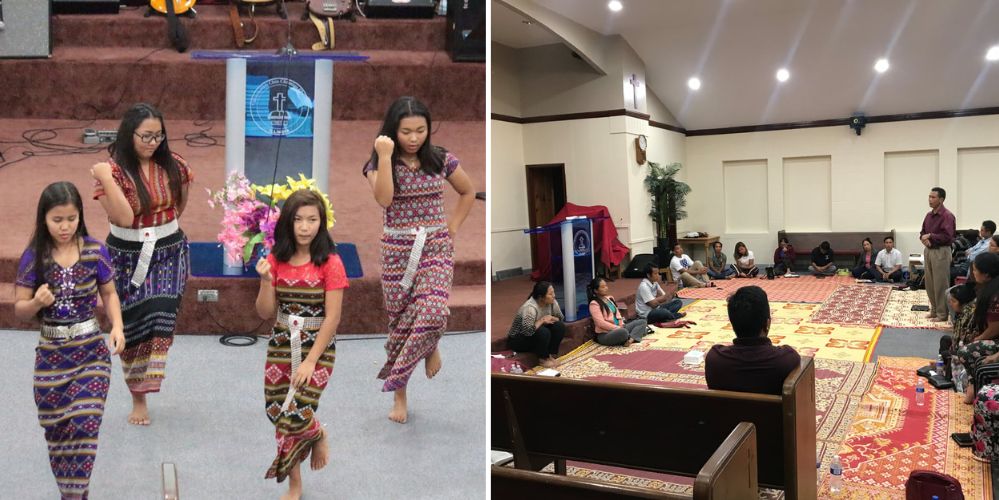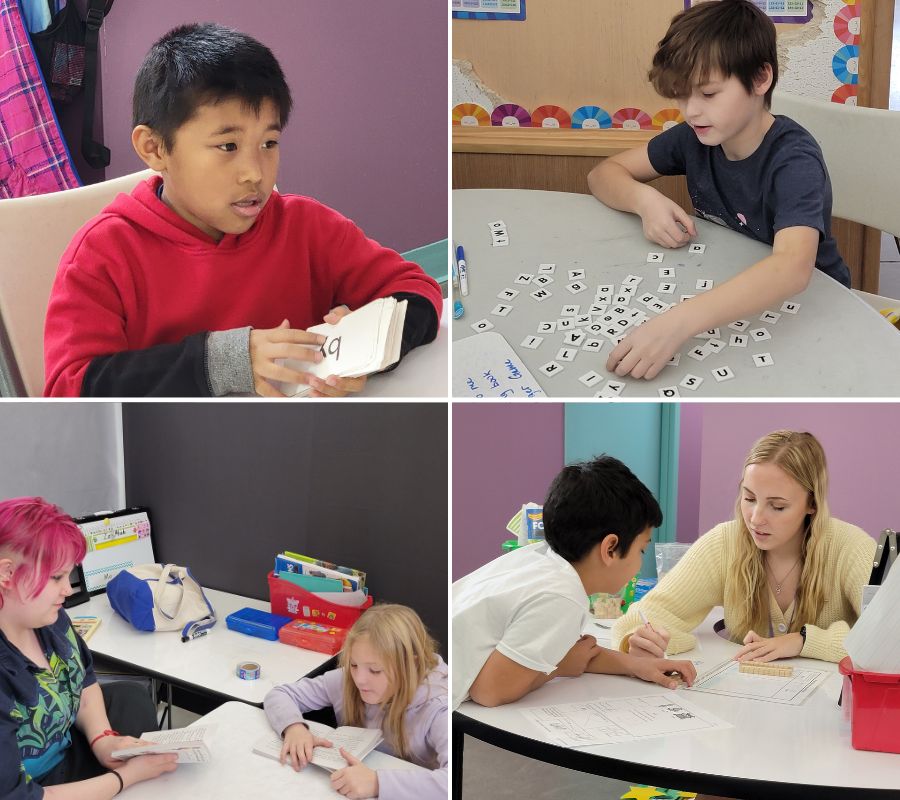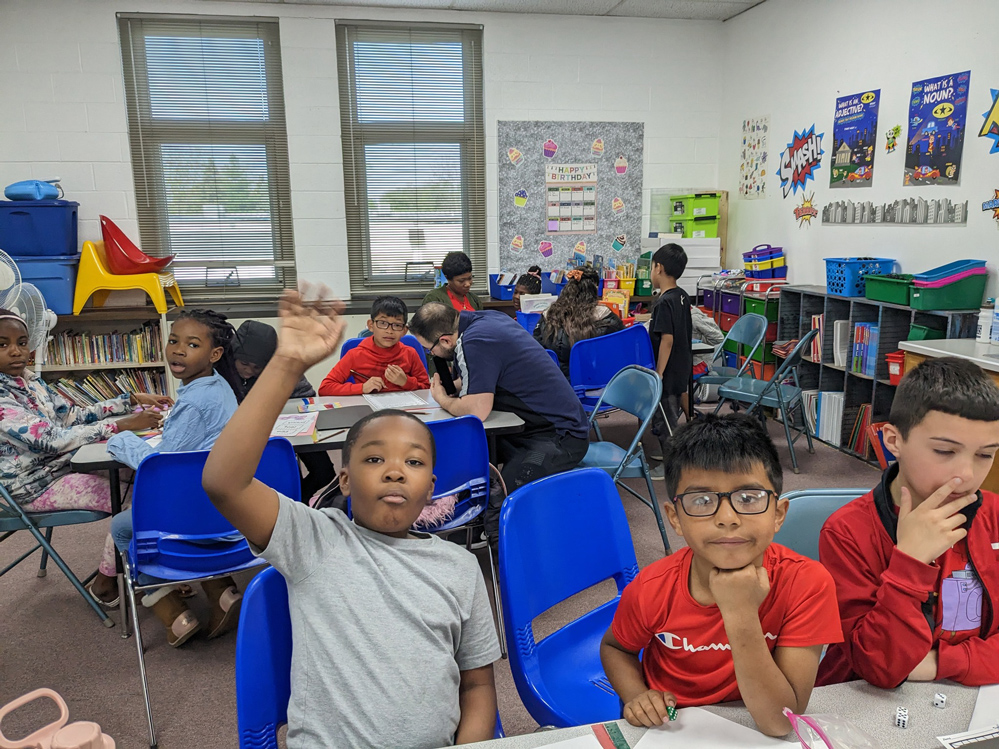This Rural Illinois District Curbed Learning Loss With Help From a Burmese Church
Monmouth-Roseville, a small district in west Illinois, has taken a no-holds-barred approach to tackling gaps in students’ learning.
By Asher Lehrer-Small | June 5, 2023Far Men Par wished she could have been the type of parent to guide her three kids through virtual learning when the pandemic shuttered schools in her rural Illinois district. But instead, while the rest of the country locked down, she and her husband had to keep working grueling days for the world’s largest pork processor, Smithfield Foods, at its plant in Monmouth.
So it was a huge help to the family, she said, that their school district used COVID relief funds to facilitate a tutoring program out of their church. There’s a “strong and united” community of people who share their Chin ethnic group identity in the small town, said Far, who left her home in Burma, now known as Myanmar, 16 years ago. And the church is a key shared space.
In the early days of the pandemic, the mother would bring her two older kids, who were in kindergarten and sixth grade at the time, to the Monmouth Chin Christian Church for in-person tutoring after their Zoom classes finished. Two paid instructors, both recent high school graduates and members of the local Chin community themselves, would coach them.

“That was really nice. I liked that,” Far said. She thinks the sessions prevented her kids from losing as much ground during the pandemic as they may have otherwise, and she appreciated the district having met the family where they were by coordinating lessons at their place of worship.
The program was but one example of the creative, no-holds-barred approach to tackling COVID learning loss deployed in Monmouth-Roseville schools.
Education experts worry that, nationwide, most academic recovery efforts have been too anemic to fully counter the damages wrought by the pandemic, but this tiny rural district appears to be beating the trend. Across the school system, students and families have gotten a boost from robust summer programming, new curriculums and no less than four different opportunities for tutoring.
Monmouth-Roseville students receiving tutoring outpaced their peers’ growth in literacy and math in 2022, according to standardized tests. And low-income students in the district made faster progress than comparable students statewide, an Illinois State Board of Education dashboard shows.
Roughly halfway between Chicago and Kansas City, and more than three hours by car from any major metropolitan area, the Monmouth-Roseville school system serves about 1,600 students, nearly a third of whom speak a language other than English at home. Many parents work grueling industrial jobs: In addition to Smithfield Foods — whose South Dakota facility turned deadly early in the pandemic — Wells Pet Food and Cloverleaf Cold Storage also have plants in the area.

The school system landed $5.3 million in federal stimulus money, its slice of the $190 billion distributed nationwide to help schools recover from the pandemic. While roughly half that sum has gone to improving the HVAC systems in two buildings, leaders have invested practically every leftover dollar into academic recovery, according to spending records obtained by The 74 from the district.
“It doesn’t make sense [to use relief money] to pave a parking lot if we have students struggling and behind grade level,” Superintendent Edward Fletcher said.
Tutoring, four ways

In addition to the effort at the Chin church, teachers and community members spearheaded two separate tutoring initiatives during the school day — the time window when researchers say programs have the best chance of reaching students who need them most.
A Monmouth College education professor began bringing a cohort of pre-service teachers into the elementary school, allowing classes to break out into small-group instruction and “hone in on some of those [learning] deficits,” said Katy Morrison, principal of Harding Primary School.
And a teacher in the district launched a science of reading-based literacy effort that has grown into a partnership with the national tutoring program Future Forward. The initiative each year matches 100 pre-K and elementary schoolers who are behind in reading with individual tutors for intensive instruction.

“We wanted to target those kids … to see if we can get them to bump up,” said teacher Trisha Olendzki, who coordinates the program.
Outside the school day, the district has invested in tutoring at the nearby Jamieson Community Center, devoting $120,000 for three years’ worth of instruction for 20 high-needs primary school students.
Far’s daughter, who’s now in second grade, worked with tutors there this year. Thanks to the extra help, the young girl has mastered material more complex than her brother had at that age, Far said.

In the classroom, the district put more than half-a-million stimulus dollars into curriculum upgrades to make sure teachers have access to “top-notch” reading and math materials, said Amy Freitag, Monmouth-Roseville’s director of grants. Leaders devoted another $150,000 to train teachers in the new approaches.
Outside the school year, district leaders carved off about $73,000 in COVID funds to run four weeks of summer learning and enrichment for three consecutive years in 2022, 2023 and 2024. The figure budgets for 11 teacher salaries each summer and a modest stipend for supplies.
“We still have to teach grade-level curriculum, but we also have to bring kids up to speed,” Freitag said. “That’s where these supplemental programs come in.”
And through it all, district leaders have made sure to cater the interventions directly to the students and families most in need of support. Some 96% of students are low-income, 20% are English learners, 58% are white, 28% are Hispanic, 4% are Black and 4% are Asian.

Tin Tial, now a sophomore at Monmouth College, was one of the recent high school grads hired to spearhead the tutoring at the Chin church in spring of 2020.
“The students definitely needed the help,” she said, explaining many parents had struggled with virtual learning due to language barriers
To advertise the program, the church sent out an email blast and handed out fliers to every family, she said, which she thinks was an effective approach because “basically all of us go to church.”

Parents in the community knew “they could rely on us,” Tin said, because she and the other tutor shared their culture and language. The young instructor distributed her phone number to families, who would text back and forth with her regularly.
The Chin community in Monmouth formed about a decade ago, she said, and now consists of roughly 50 families. Many, including Far’s, were drawn by jobs at the Smithfield plant, she said. The community immediately established the church and have used it as a gathering point ever since.
To Freitag, who brought the church-based program to life by greenlighting grant money to pay the tutors, the effort was one piece of a wider puzzle to help families recover from the pandemic.
She’s proud that Monmouth-Roseville parents seeking to catch their kids up have numerous high-quality choices.
“The options are endless,” Freitag said.
Get stories like these delivered straight to your inbox. Sign up for The 74 Newsletter

